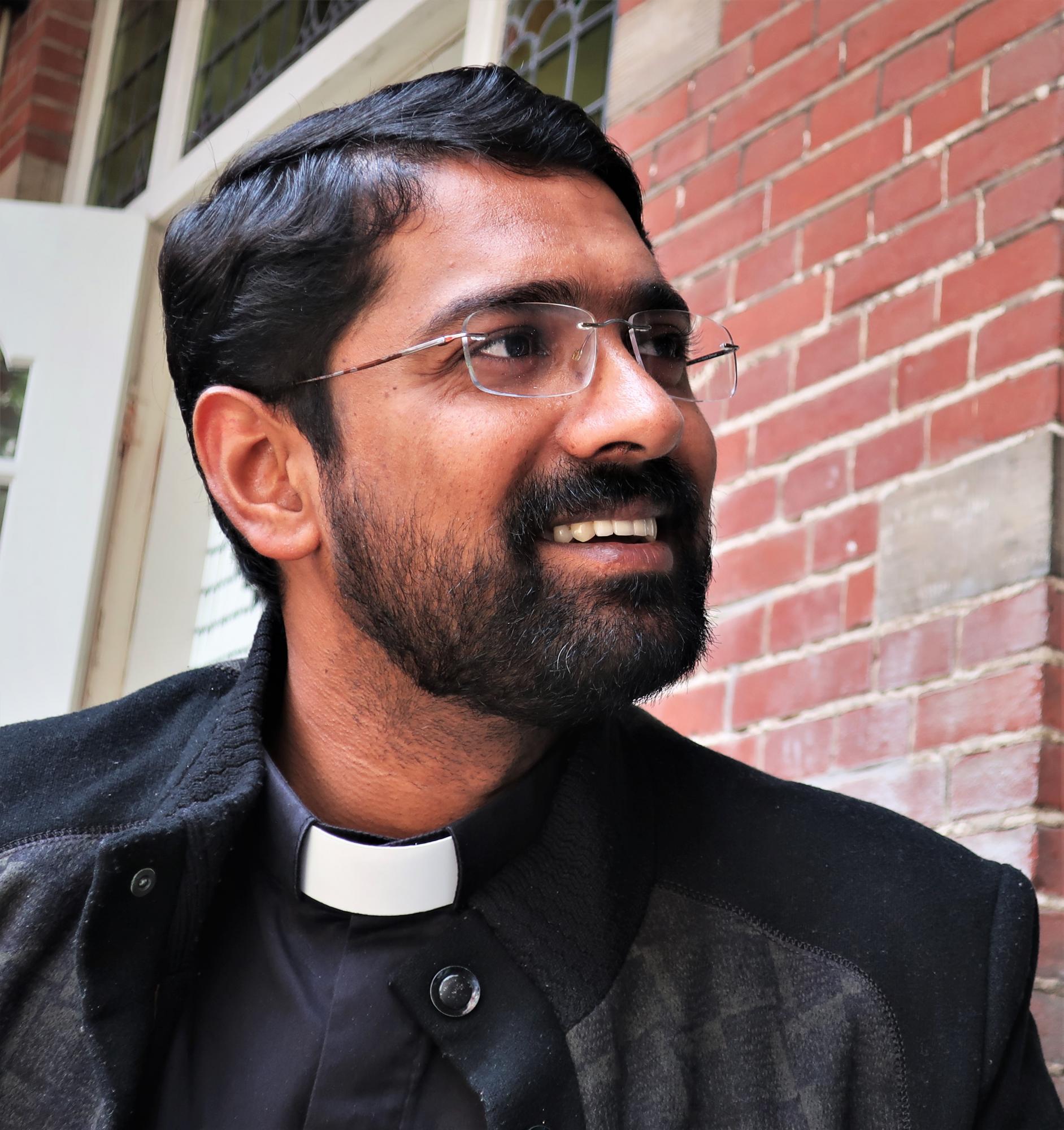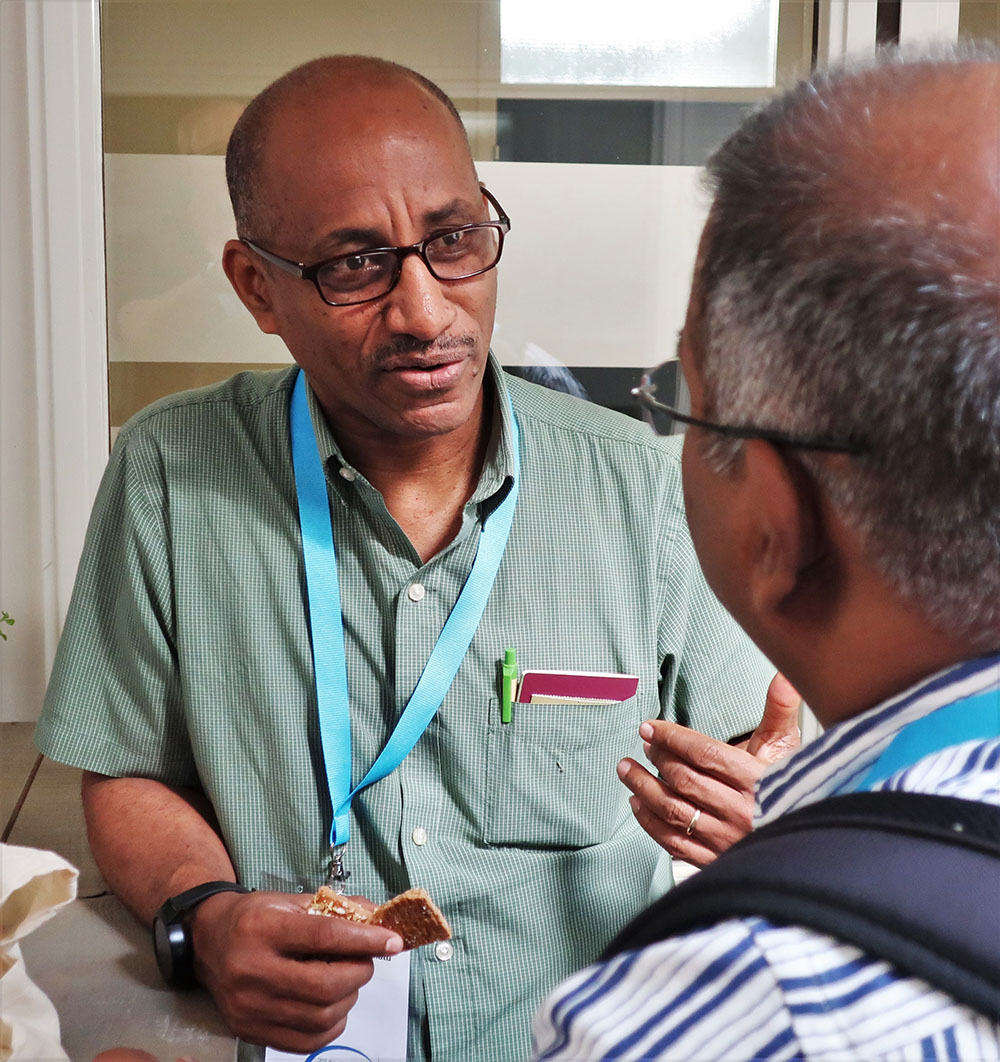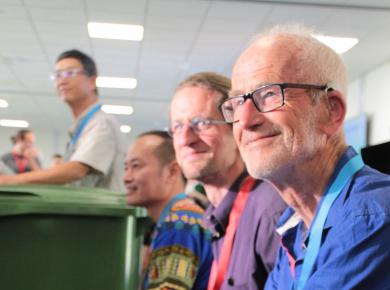Posted: July 24, 2019
Is Christian peacemaking different from other forms of reconciliation? Do Anabaptists work at peacebuilding in ways that set them apart? Several of 223 persons from 36 countries at the 2nd Global Mennonite Peacebuilding Conference in the Netherlands (27–29 June 2019) responded to those questions.
 “Many people around the world do reconciliation,” said Prakash Thankachan of India, “but Christians have a different motivation. Jesus said, ‘my peace I give to you. I do not give to you as the world gives’ (John 14:27).”
“Many people around the world do reconciliation,” said Prakash Thankachan of India, “but Christians have a different motivation. Jesus said, ‘my peace I give to you. I do not give to you as the world gives’ (John 14:27).”
An ordained deacon in the Church of North India, Prakash works with Mennonite Central Committee to train others in peacebuilding skills. He cites the 1569 Dirk Willems prison break story from the Netherlands and 2006 Amish school shooting forgiveness as examples of Anabaptist peace witness that particularly inspire him.
Marcus Weiand, of the Free Evangelical church, director of the Institute for Conflict Transformation at Bienenberg, Switzerland, points to Jesus. “What I learned from Anabaptism is strong emphasis on God coming down to humanity in Jesus Christ to care for the hungry and needy. We are called to follow Jesus now so closely that we get dusty from his feet.”
 Civil war is the context of incarnational peacebuilding by Anabaptists in Colombia. Mennonite attorney Katherine Torres, coordinator of Puentes para la Paz (Bridges for Peace), spoke of her efforts to draw Christians from many denominations into the peace process near the end of Colombia’s 60 years of civil war. They initiated risky dialogue with the militia groups. “At one point we were in the middle of a fire fight,” she says.
Civil war is the context of incarnational peacebuilding by Anabaptists in Colombia. Mennonite attorney Katherine Torres, coordinator of Puentes para la Paz (Bridges for Peace), spoke of her efforts to draw Christians from many denominations into the peace process near the end of Colombia’s 60 years of civil war. They initiated risky dialogue with the militia groups. “At one point we were in the middle of a fire fight,” she says.
“Nonviolence is the gift of Anabaptists,” Torres says. “Anabaptists work at peacemaking out of a strong sense of community.”
 Ethiopia is an example of Anabaptist peace witness grounded in community. “Christ himself is our peace (Ephesians 2),” says Tewodros Beyene, president of Meserete Kristos (MK) church, an Anabaptist denomination. “It’s because of Christ that we come together as a church.”
Ethiopia is an example of Anabaptist peace witness grounded in community. “Christ himself is our peace (Ephesians 2),” says Tewodros Beyene, president of Meserete Kristos (MK) church, an Anabaptist denomination. “It’s because of Christ that we come together as a church.”
To break a cycle of retribution, MK church members provide vocational training so prison inmates can function productively when released. “If you kill someone in Ethiopia,” he explains, “even if you serve a long prison term, you will die from revenge killing as soon as you are released.” The church works to prepare prisoners’ home communities to receive them.
Church members are quick to tell others they do this work because Christ came to reconcile us. “Some 1,200 persons commit their lives to Christ each year through this ministry,” Tewodros says.
“The church’s peace work should have a vision of mission. We have a gospel of peace and need to be evangelists who call others to peaceful relationship with God.”

Grace Carhart, graduate student at the Institute for Christian Studies, Toronto, Canada, sees the church’s potential “to allow ourselves to be shaped in positive ways by community. With a solid base of positive identity, people of the church don’t have to be afraid to interact with those who are different.”
Not Mennonite herself, Grace Carhart sees Mennonites as being open to diverse groups and perspectives. Hector Acero Ferrer of Colombia, who jointly led a workshop with her, said, “The church is a place where people again and again can tell the story of being a victim – or a perpetrator.”
 For Anabaptists to sustain the hard work of peacebuilding, Derek Suderman of Conrad Grebel University College in Canada underscores that we must keep our primary language of biblical/theological understanding central. Out of that base emerges our secondary language of human rights and international law. “The survival of the Mennonite peace position depends upon our ability to articulate the primary reasons we do peacemaking,” he asserts. “Peacemaking should be byproduct of our faith, not the thing itself.”
For Anabaptists to sustain the hard work of peacebuilding, Derek Suderman of Conrad Grebel University College in Canada underscores that we must keep our primary language of biblical/theological understanding central. Out of that base emerges our secondary language of human rights and international law. “The survival of the Mennonite peace position depends upon our ability to articulate the primary reasons we do peacemaking,” he asserts. “Peacemaking should be byproduct of our faith, not the thing itself.”
—J. Nelson Kraybill is president of MWC (2015–2021). He lives in Indiana, USA.


Comments: